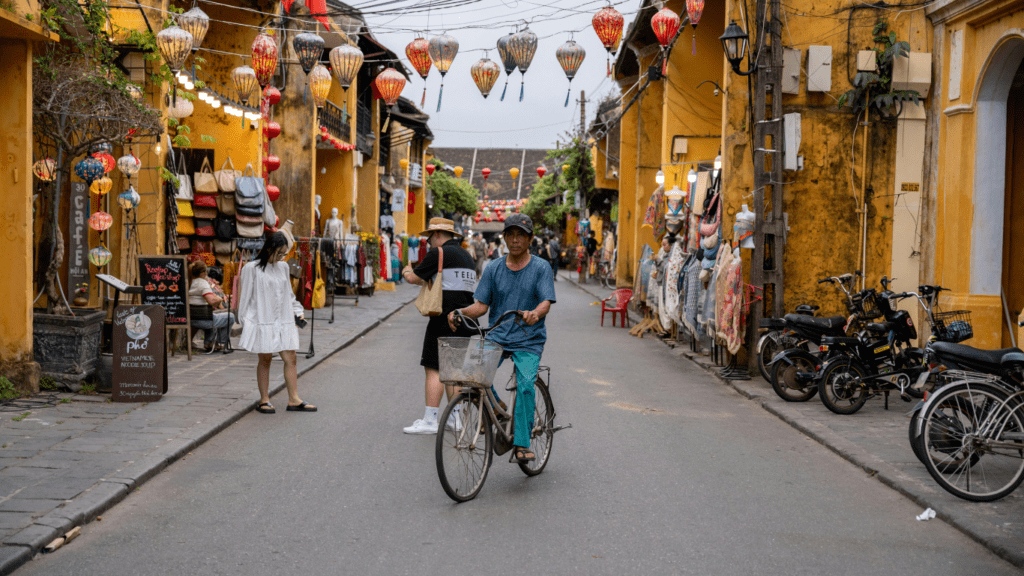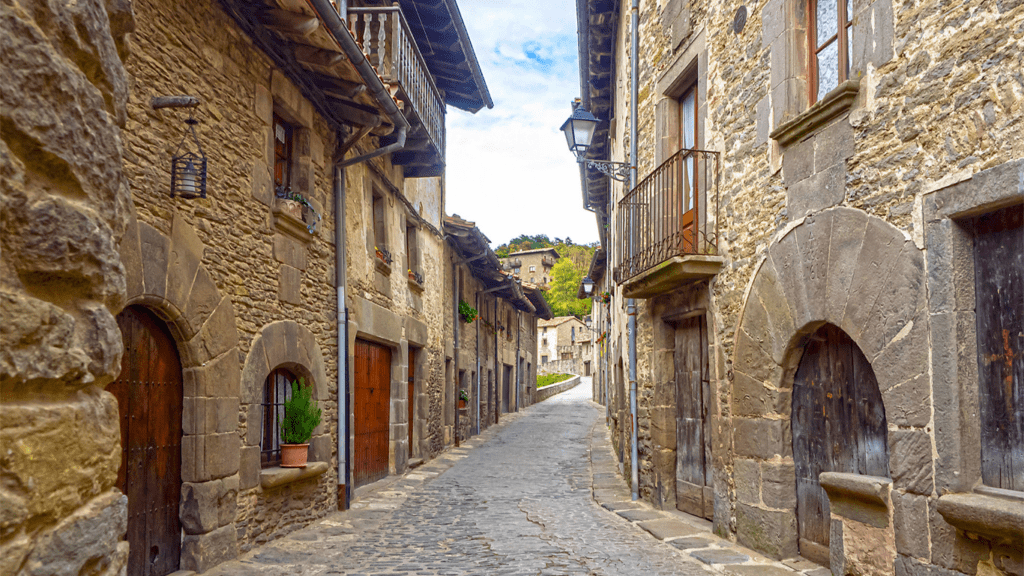Nestled along the picturesque coast of central Vietnam, Hoi An is a charming town steeped in history and culture. As I explore this enchanting destination, I can’t help but be captivated by its rich heritage and vibrant atmosphere.
From ancient temples to lantern-lit streets, Hoi An offers a tapestry of experiences that beckon travelers from around the globe. In this article, I’ll be sharing my insights on the top 10 must-see attractions in Hoi An. Whether you’re a history buff, a food enthusiast, or simply a wanderer in search of beauty, this list has something for everyone.
Join me on a virtual journey through the cultural gems and hidden treasures that make Hoi An a must-visit destination for any traveler.
Exploring Hoi An: A Guide to the Top Attractions
Embarking on a journey through Hoi An unveils a tapestry of enchanting attractions that cater to diverse interests, from history enthusiasts to food lovers and admirers of beauty. Here, I’ll guide you through the top 10 must-see sites that define the allure of this historic town on the central coast of Vietnam.
Let’s delve into the essence of Hoi An’s cultural tapestry and discover its hidden gems.
1. Ancient Town
Exploring Hoi An’s Ancient Town is like stepping back in time, immersing myself in a world of rich history and cultural heritage. The well-preserved architecture, ancient homes, and narrow streets transport me to a bygone era, offering a glimpse into Vietnam’s vibrant past.
Historical Charm of Hoi An
The historical charm of Hoi An is palpable as I stroll through its Ancient Town. The blend of Vietnamese, Chinese, Japanese, and European influences is evident in every building and street corner, showcasing centuries of cultural exchange and architectural beauty.
Wandering through the maze of alleyways, I encounter ancient temples, communal houses, and historic bridges that speak volumes about Hoi An’s illustrious past.
2. Japanese Covered Bridge
Exploring Hoi An’s cultural tapestry, the Japanese Covered Bridge stands as an iconic symbol of the town’s historical significance. Built in the 18th century, this architectural gem blends Japanese and Vietnamese design, representing the fusion of two cultures through intricate carvings and its pagoda-like structure.
Spanning a tranquil stream, the bridge offers stunning views and serves as a reminder of the historical trade and cultural exchange between Japan and Vietnam. Visitors to Hoi An are drawn to this symbol of unity, experiencing both its architectural beauty and the rich cultural narrative it embodies.
3. An Bang Beach
Wandering from the historical sites of Hoi An to its peaceful shores, An Bang Beach offers a serene escape with its soft golden sands and crystal-clear waters. The beach provides a perfect setting for relaxation, with gentle waves ideal for both sunbathing and swimming.
An Bang Beach combines natural beauty with a lively beachside community, featuring cafes, bars, and seafood restaurants. Visitors can enjoy fresh seafood, tropical cocktails, or a beachfront massage, making it a must-visit destination for those seeking both tranquility and vibrant coastal energy.
4. Tra Que Vegetable Village
Exploring Tra Que Vegetable Village in Hoi An offers an authentic look into Vietnamese agricultural practices, where traditional methods have been preserved for generations. The village is renowned for its organic herb and vegetable cultivation, providing fresh produce to the local area and showcasing the region’s rich farming heritage.
Visiting this picturesque village allows for hands-on experiences, from learning traditional farming techniques to participating in planting and harvesting. The opportunity to join a cooking class, preparing authentic Vietnamese dishes with fresh, organic ingredients, deepens the connection to the local culture and enhances appreciation for the culinary traditions of the region.
5. Hoi An Night Market
Venturing into the vibrant atmosphere of Hoi An Night Market offers a lively experience filled with colorful lanterns and a variety of local handicrafts. The market’s bustling stalls showcase traditional Vietnamese products and crafts, while the tantalizing aroma of street food leads visitors on a culinary adventure.
The night market is a lively hub where artisans demonstrate skills such as lantern making and silk weaving, providing a glimpse into the town’s rich craftsmanship. Indulging in local specialties like banh mi and grilled seafood while engaging with locals fosters a sense of camaraderie and a deeper appreciation for the flavors and culture of Hoi An.
6. Assembly Halls of Hoi An
Exploring the Assembly Halls of Hoi An showcases the town’s vibrant cultural heritage through grand architecture and historical significance. These halls served as communal centers for various ethnic groups, reflecting the town’s diverse cultural tapestry and communal spirit.
- Quang Trieu Assembly Hall: Known as the Cantonese Assembly Hall, this magnificent structure exemplifies traditional Chinese architecture with intricate wood carvings, colorful mosaics, and ornate decorations. It stands as a testament to the Chinese community’s contributions to Hoi An’s history and cultural mosaic.
- Hokkien Assembly Hall (Fujian Assembly Hall): A cultural gem dedicated to the Fujian people, this hall features a serene courtyard, elaborate gates, and a stunning temple honoring Thien Hau, the goddess of the sea. The detailed artwork and stunning architecture provide insight into the spiritual beliefs and customs of the Fujian community.
- Hainan Assembly Hall: This hall pays homage to the Hainanese community with a blend of Vietnamese and Chinese architectural elements. Intricate woodwork, tranquil ponds, and a peaceful ambiance make it a tranquil retreat that reflects the community’s traditions and values.
Immerse yourself in the cultural heritage of Hoi An by visiting these Assembly Halls, each a testament to the town’s history, diversity, and architectural splendor.
7. Museum of Trade Ceramics
Diving into the historical treasures of Hoi An, the Museum of Trade Ceramics offers an immersive look into the town’s rich merchant past. Its impressive collection of ceramics, dating back to the 8th century, highlights the craftsmanship and trade connections that shaped Hoi An’s cultural landscape.
As I explore the museum, I’m captivated by the diverse ceramic artifacts, each telling a story of cultural exchange and the town’s role in international trade. The intricate designs on bowls, vases, and decorative pieces reflect Hoi An’s vibrant history and its unique fusion of indigenous and foreign influences.
8. Cua Dai Beach
Exploring Cua Dai Beach is a highlight of any visit to Hoi An. This pristine stretch of coastline offers a serene retreat from the town’s hustle and bustle. With its powdery white sands and clear azure waters, Cua Dai Beach is a paradise for beach lovers and sun-seekers alike. It’s a perfect spot to unwind, bask in the sun, and take refreshing dips in the gentle waves.
Visitors to Cua Dai Beach can also indulge in a variety of water activities such as swimming, snorkeling, and even jet skiing. The beachside cafes and restaurants serve up fresh seafood dishes and refreshing drinks, allowing you to savor the flavors of the local cuisine while enjoying the picturesque views of the coast.
Whether you’re looking for a tranquil day by the sea or seeking some adventure on the water, Cua Dai Beach offers a perfect blend of relaxation and recreation. Its laid-back vibe and natural beauty make it a must-visit attraction in Hoi An for those craving a beach getaway with a touch of Vietnamese charm.
9. My Son Sanctuary
Exploring the captivating heritage of Hoi An, My Son Sanctuary stands out as a cultural gem, offering a deep dive into the region’s spiritual and architectural history. Nestled in lush greenery, this cluster of Hindu temples, built between the 4th and 13th centuries, showcases the Champa Kingdom’s architectural prowess and religious significance.
As a UNESCO World Heritage Site, My Son Sanctuary blends Hindu and indigenous beliefs, highlighting the cultural syncretism of the Champa civilization. Visitors can appreciate the intricate carvings, red brick towers, and dynamic Cham dance performances, gaining insight into the region’s rich heritage and artistic traditions.
10. Thanh Ha Terracotta Park
Exploring Thanh Ha Terracotta Park offers a captivating glimpse into Vietnam’s rich cultural heritage through the artistry of terracotta craftsmanship. Visitors can witness skilled artisans using age-old techniques to mold and fire clay into intricate sculptures, showcasing the precision and dedication behind each piece.
The park’s serene ambiance enhances the experience, with the opportunity to try pottery making and gain hands-on insight into the ancient craft. Wandering through terracotta gardens, I am struck by the beautiful sculptures that tell stories of Vietnamese folklore and daily life, making it a must-visit destination for those seeking to understand the artistic soul of Vietnam.



 Fredey Gatestandser, the founder of Drip Travels Hide, is a seasoned traveler with a passion for exploring unique destinations. He created the platform to go beyond typical tourist spots, offering expert tips and hidden gems for unforgettable journeys. Through his vision, Drip Travels Hide helps adventurers discover new places with ease and inspiration.
Fredey Gatestandser, the founder of Drip Travels Hide, is a seasoned traveler with a passion for exploring unique destinations. He created the platform to go beyond typical tourist spots, offering expert tips and hidden gems for unforgettable journeys. Through his vision, Drip Travels Hide helps adventurers discover new places with ease and inspiration.